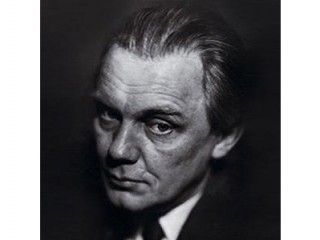
Gunnar Asplund biography
Date of birth : 1885-09-22
Date of death : 1940-10-20
Birthplace : Stockholm, Sweden
Nationality : Swedish
Category : Arhitecture and Engineering
Last modified : 2011-04-06
Credited as : Architect, Architectural Review magazine, The Stockholm Exhibition buildings
Erik Gunnar Asplund was a leader of modern design whom the magazine "Architectural Review" called the "high priest of functionalism in Sweden."
Gunnar Asplund was born in Stockholm. He studied at the Technical High School and then at the Academy of Art, graduating in 1909. That year he entered an architectural competition for the Swedish Church in Paris, basing his design upon Swedish traditional architecture. He also used this approach in two competitions for schools, one at Karlshamn (1912) and the other at Hedemora (1913); the latter was not built, being considered insufficiently monumental. In 1913 he won the competition for an extension to the Town Hall in Goteborg and toured Italy and Greece.
Returning to Sweden, Asplund won, in collaboration with Sigurd Lewerentz, a competition for the South Burial Ground within a wooded area of Stockholm. Asplund's First Mortuary Chapel for the Burial Ground has the plan of an Etruscan-Roman temple, but with its steep-hipped roof covered in wood shingles it blends into the landscape.
Asplund visited the United States to investigate library design with the aim of writing a program for a Swedish competition. His investigation so impressed the Stockholm Municipal Library Committee that no competition was held, and they invited him to submit a project; this Asplund did in 1921 and the building was completed in 1928. His design utilized the severe geometric simplicity of the late-18th-century romantic-classicists (or neoclassicists), whose designs were usually based on the cube, cylinder, and sphere.
The Stockholm Exhibition buildings of 1930 not only established modern architecture in Sweden but also established Asplund as the leader of a group of young architects within the Arts and Crafts Society. Four years later Asplund was given the commission for the extension to the 17th-century Goteborg Town Hall, which he had originally won in competition in 1913. His original design had been monumental and axially designed with a symmetrical entrance from the side of the building. His design of 1934, influenced by the work of the architect Le Corbusier, used classical proportions to express the structure. Internally, a spacious hall links the courtyard of the old building with nothing more than a glass wall to prevent the free flow of space. Swedish green marble, grained plywood, and a color scheme of white and blue contribute to the feeling of a totally modern structure. Asplund's last major work was the Woodland Crematorium (1935-1940); it is monumental and yet severely simple, notably in the entrance portico.
In all, Asplund designed 68 projects, of which 32 were constructed. They include an airport, schools, housing, shops, restaurants, and mausoleums.
The first book-length publication on Asplund was Gustav Holmdahl, ed., Gunnar Asplund, Architect, 1885-1940 (1943; trans. 1950); it is well illustrated with plans, sketches, and photographs. Eric de Mare published a short monograph, Gunnar Asplund (1955). G. E. Kidder Smith, Sweden Builds (1950; 2d ed. 1957), discusses modern Swedish architecture generally and places Asplund in context with other modern Swedish architects.


















